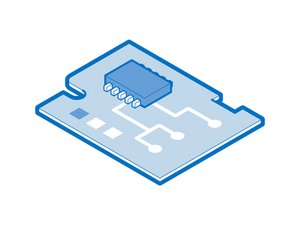Every tech develops their approach, based on their knowledge, skills, tools and intuition. You will also develop an approach that works well for you but it may require a bit of trial and error.
In you list above, I personally don’t like to apply voltage until I have a better idea of what ‘s wrong. Too much current for too long can exacerbate the issue and even cause more downstream damage. At some point, you may have to, because you can’t find an obvious issue but I like to apply voltage later in the process. The obvious exception to this rule is a quick connection at first to get an idea of how the phone is behaving…i.e. dead short, pulsing, stuck at 0.44A etc.
Having access to proper tools like ZXW or having known-good devices on hand for comparison is essential. I don’t like swapping out IC’s as a troubleshooting process because you are adding a ton of heat to the board, which can cause collateral damage, especially when you are first starting out and have less skill and experience. The more underfill a board has, the greater the risk. As with my point above, at some point, you may need to do this when you have exhausted your other options.
Some problems are more obvious or well known so swapping IC’s or applying voltage to a shorted board may happen sooner in your troubleshooting than with other problems, for example an iPhone 6/6P with “Searching” or any iPhone with fake/slow charging.
Here is my approach for a dead iPhone. The rails detailed below apply to the 6S/6SP but the process works on pretty much all of the Apple devices, including iPads.
When dealing with a “dead” phone, there is no "silver-bullet" solution. You have to probe the board to get a better understanding of what is working properly and what is not. It may be a simple solution or a complex one. Sometimes we see a visibly blown cap, replace and all is well. Other times, everything looks perfect yet the phone won't boot.
You have to start at the beginning and check PP_BATT_VCC, PP_VCC_MAIN and PP5V0_USB. I would start by checking to see if those rails are shorted to ground. If one of these rails is shorted to ground, then you will need to identify what is causing the short. It could be a bad decoupling capacitor, conductive debris or defective IC that is directly supplied by those rails. There are various techniques to help you find these kinds of shorts, such as cold spray, thermal cameras, fingers, cheeks etc.
If they are not shorted, then you can connect, preferably, a known-good battery (or a current limited DC power supply with the appropriate connector adapter) to see what voltage you measure. If the voltage is low or lower than the battery voltage (which you measured before plugging it in ;>), then there could be a short circuit on secondary subsystem that is causing the battery to drop voltage or DCPS to be current-limited.
If you are measuring the proper voltage, then you move onto the PMIC and check the voltage rails it generates. The PMIC generates a bunch of voltage rails. They are all important (for obvious reasons) but the ones to check first are as follows:
- PP_CPU & PP_GPU – These rails supply the CPU & GPU. They are low resistance rails so they may “beep” when you test them on your multimeter in continuity mode. It’s important to look at the reading and not focus just on the beep. You will typically measure something around 20-100 Ohms on these lines.
- PP1V8_SDRAM & PP1V1_SDRAM – These rails supply the SDRAM (which is sandwiched with the SoC/CPU).
- PP_SOC & PP_FIXED– These rails supply the rest of the System on a Chip. What we commonly refer to as the CPU is actually a SoC.
- PP_CPU_SRAM & PP_GPU_SRAM - These rails supply the Static RAM
- PP0V9_NAND & PP3V0_NAND – These rails supply the NAND chip.
- PP3V0_Tristar – These rails supply Tristar chip.
- PP1V2 - Supplies various subsystems including SoC, FCAM/RCAM
- PP1V1 – Supplies the High Speed Digital Communications via the SoC
- PP0V8_OWL - OWL subsystem on the SoC
- PP1V8_ALWAYS – This is an “always-on” voltage rail that is used for the bootstrapping of the device
The PMIC also generates, what I would consider secondary, yet still important voltage rails for the following sub-systems:
- PP1V8_MESA & PP3V0_MESA – Supplies the Home Button TouchID subsystem
- PP1V8_VA – Supplies the Audio Codec and Speaker Amp
- PP1V8_TOUCH - Supplies the Touch subsystem on the screen and acts as a pull-up supply for various systems
- PP3V0_PROX_ALS – Supplies the Proximity and Ambient Light Sensor
- PP3V0_PROX_IRLED – Supplies the Infrared LED of the Proximity sensor
- PP3V0_IMU_OWL – Supplies the Compass and sensors
- PP3V3_USB – Supplies the USB functionality of the SoC
- PP3V3_ACC – Supplies power to any accessory connected to the Lightning Port via the Tristar IC. (This line is only "on" for a very short period of time so you only need to worry about shorts, not voltage)
You should start with measuring the rail in Diode Mode or Resistance mode while unpowered to limit any potential damage of excessive current going through the logic board. If there are shorts, do as above to identify any faulty components. If there is no apparent short or you can’t find the source of a short, you can connect the battery and look for hotspots. Do this with caution to avoid additional damage to the logic board.
Depending on what you find, it may be a PMIC issue (which is actually pretty rare on the iPhone 6S and above) or a downstream issue (more likely). On really difficult problems, you can apply the same process to the Baseband PMU voltage rails as well as all tertiary LDO (Low DropOut) voltage regulators, such as camera LDO’s.
Most of the time, you will find something wrong. However, some phones don’t expose their secrets so easily and then you want to look at I2C lines, crystal outputs etc. This is where the “experience” part comes in. Take note of symptoms and solutions so that you can build some form of knowledge base while you’re at it.

 4
4  1
1 
 807
807
3 opmerkingen
Which iPhone?
door Dan
Hi Dan and thanks for reading. I was hoping to get a more general guide together (big hope), at least a sensible approach for most iphones, the phones I've been working on recently have been 6/6s/7/7s
Thanks
door Darren
Ask the owner of the phone all the questions u can, gather as much info as possible
What happened to it, what did they try, did it go somewhere else etc, was it dropped, on charge, water damaged etc history is really really important.
1, ask questions
2, peep inside for obvious dumb things eg tonnes of water, battery disconnected etc.
3, try it, see if it turns on
4, no display try a new display and parts u know actually 100% work
5, connect it to a DC power supply is there power draw without trying to turn it on?
6, see what it does on the power supply and go from there. Is it drawing no power, is it drawing too much power, is it actually appearing like its booting ok but just no display etc is it in recovery.
7, take good look microscope anything obvious
8, remove shields take another look
9, check power rails
10, check data lines
Change the order if its water damaged dont connect power straight away if its had water damage
door c9679